|
|
|
 |
Humans and Dolphins: If Brain Size Is a Measure, We're Not That Different
|
 |
| |
 Scientists have determined how brain size changed in dolphins and their relatives over the past 47 million years, and how these species evolved in relation to humans. The results of the research, published online in the journal The Anatomical Record, show that, in terms of brain size, humans and dolphins aren't that different. Lead scientist on the National Science Foundation (NSF)-funded project is Lori Marino of Emory University in Atlanta; colleagues Daniel McShea from Duke University in North Carolina and Mark Uhen from the Cranbrook Institute of Science in Bloomfield, Michigan, are co-investigators on the study. Dolphin brains are four to five times larger than would be expected for their body size when compared to another animal of similar size. In humans, the measure is seven times larger. Scientists have determined how brain size changed in dolphins and their relatives over the past 47 million years, and how these species evolved in relation to humans. The results of the research, published online in the journal The Anatomical Record, show that, in terms of brain size, humans and dolphins aren't that different. Lead scientist on the National Science Foundation (NSF)-funded project is Lori Marino of Emory University in Atlanta; colleagues Daniel McShea from Duke University in North Carolina and Mark Uhen from the Cranbrook Institute of Science in Bloomfield, Michigan, are co-investigators on the study. Dolphin brains are four to five times larger than would be expected for their body size when compared to another animal of similar size. In humans, the measure is seven times larger.
Image: GettyImages/PhotoDisc/Nick Koudis
Read the full story. ... Posted
10/27/04
|
 |
Statement by NSF Acting Director Arden Bement on Nobel Prizes in Science and NSF Connections
|
 |
| |
 I am pleased to congratulate this year's Nobel laureates in science for their much-deserved recognition. On behalf of the American public, the National Science Foundation takes great pride in the remarkable achievements of this year's laureates who have been supported by NSF grants throughout their careers.
Of the 10 2004 Nobelists in science, six were supported by NSF at some time in their careers. The Economics laureates, Finn Kydland and Edward Prescott, received the prize for work funded by NSF. I am pleased to congratulate this year's Nobel laureates in science for their much-deserved recognition. On behalf of the American public, the National Science Foundation takes great pride in the remarkable achievements of this year's laureates who have been supported by NSF grants throughout their careers.
Of the 10 2004 Nobelists in science, six were supported by NSF at some time in their careers. The Economics laureates, Finn Kydland and Edward Prescott, received the prize for work funded by NSF.
Image: NSF
Read the full statement. ... Posted
10/13/04
|
 |
NIH-NSF to Convene Interagency Conference on Bridging the Life and Physical Sciences
|
 |
| |
 The National Institutes of Health and the National Science Foundation are convening the conference, "Research at the Interface of the Life and Physical Sciences: Bridging the Sciences," on Nov. 9, 2004, at the Natcher Conference Center on the main NIH campus in Bethesda, Md. The objectives of the conference are to identify opportunities, grand challenges, and issues at the interface of the life and physical sciences that could result in major advances and to develop approaches for bridging these traditionally separate fields. The National Institutes of Health and the National Science Foundation are convening the conference, "Research at the Interface of the Life and Physical Sciences: Bridging the Sciences," on Nov. 9, 2004, at the Natcher Conference Center on the main NIH campus in Bethesda, Md. The objectives of the conference are to identify opportunities, grand challenges, and issues at the interface of the life and physical sciences that could result in major advances and to develop approaches for bridging these traditionally separate fields.
Image: Getty Images/PhotoDisc/Russell Illig
Read the full story. ... Posted
10/13/04
|
 |
NSF Funds First Nanoscale Center for Learning and Teaching
|
 |
| |
 With a five-year, $15,000,000 grant to Northwestern University, the National Science Foundation is funding the nation's first Center for Learning and Teaching in Nanoscale Science and Engineering (NCLT). The center, under the direction of Northwestern professor of materials science and engineering, Robert P.H. Chang, will develop scientist-educators who can introduce nanoscience and nanoengineering concepts into schools and undergraduate classrooms. Additionally, it will play the key role in a national network of researchers and educators committed to ensuring that all Americans are academically prepared to participate in the new opportunities nanotechnology will offer. The NCLT is a partnership between Northwestern University, Purdue University, the University of Michigan, Argonne National Laboratories, and the Universities of Illinois at Chicago and Urbana-Champaign. With a five-year, $15,000,000 grant to Northwestern University, the National Science Foundation is funding the nation's first Center for Learning and Teaching in Nanoscale Science and Engineering (NCLT). The center, under the direction of Northwestern professor of materials science and engineering, Robert P.H. Chang, will develop scientist-educators who can introduce nanoscience and nanoengineering concepts into schools and undergraduate classrooms. Additionally, it will play the key role in a national network of researchers and educators committed to ensuring that all Americans are academically prepared to participate in the new opportunities nanotechnology will offer. The NCLT is a partnership between Northwestern University, Purdue University, the University of Michigan, Argonne National Laboratories, and the Universities of Illinois at Chicago and Urbana-Champaign.
Image: Northwestern University
Read the full story. ... Posted
10/1/04
|
 |
NSF Announces $21.7 Million for 37 Projects to Study Human and Social Dynamics
|
 |
| |
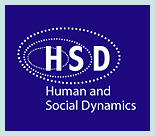 The National Science Foundation has awarded grants totaling $21.7 million to address complex, interdisciplinary issues in the foundation's newest priority area, human and social dynamics. Studies will cover a wide range of topics, for example, using neural data to understand why different people make different strategic choices, deciphering the relationships between genetic and cultural change, exploring the causes and consequences of urban expansion and the effects of local policies on expansion, and identifying how people develop ways to manage common resources. The National Science Foundation has awarded grants totaling $21.7 million to address complex, interdisciplinary issues in the foundation's newest priority area, human and social dynamics. Studies will cover a wide range of topics, for example, using neural data to understand why different people make different strategic choices, deciphering the relationships between genetic and cultural change, exploring the causes and consequences of urban expansion and the effects of local policies on expansion, and identifying how people develop ways to manage common resources.
Image: Omnistudio
Read the full story. ... Posted
10/1/04
|
 |
NSF Awards $130 Million to Tackle Information Technology Research for National Priorities
120 new projects will advance science and engineering, economic prosperity, national security
|
 |
| |
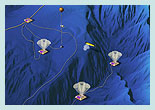 The National Science Foundation has made awards supporting nearly 120 new Information Technology Research (ITR) projects dedicated to addressing the information technology priorities facing the country -- advances in science and engineering, economic prosperity and a vibrant civil society, and national and homeland security. The awards encompass principal investigators from 32 states and the District of Columbia and average $1.25 million, with a total estimated funding of more than $130 million over five years. Projects cover a wide range of topics, including interactive ocean observatories and deep-sea exploration; stress corrosion cracking in materials; protection of critical infrastructures; improvements to healthcare processes; and secure access to confidential social science data. The National Science Foundation has made awards supporting nearly 120 new Information Technology Research (ITR) projects dedicated to addressing the information technology priorities facing the country -- advances in science and engineering, economic prosperity and a vibrant civil society, and national and homeland security. The awards encompass principal investigators from 32 states and the District of Columbia and average $1.25 million, with a total estimated funding of more than $130 million over five years. Projects cover a wide range of topics, including interactive ocean observatories and deep-sea exploration; stress corrosion cracking in materials; protection of critical infrastructures; improvements to healthcare processes; and secure access to confidential social science data.
Image:The NEPTUNE Project, University of Washington
Read the full story. ... Posted
10/1/04
|
 |
Out of Africa: Scientists Find Earliest Evidence Yet of Human Presence in Northeast Asia
|
 |
| |
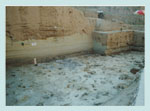 Early humans lived in northern China about 1.66 million years ago, according to research reported in the journal Nature this week. The finding suggests humans -- characterized by their making and use of stone tools -- inhabited upper Asia almost 340,000 years before previous estimates placed them there, surviving in a pretty hostile environment. The research team, including Richard Potts of the Smithsonian Institution's National Museum of Natural History, reports the results of excavating four layers of sediments at Majuangou in north China. All the layers contained indisputable stone tools apparently made by early humans, known to researchers as "hominins." Early humans lived in northern China about 1.66 million years ago, according to research reported in the journal Nature this week. The finding suggests humans -- characterized by their making and use of stone tools -- inhabited upper Asia almost 340,000 years before previous estimates placed them there, surviving in a pretty hostile environment. The research team, including Richard Potts of the Smithsonian Institution's National Museum of Natural History, reports the results of excavating four layers of sediments at Majuangou in north China. All the layers contained indisputable stone tools apparently made by early humans, known to researchers as "hominins."
Image: R. Potts, Smithsonian Institution's National Museum of Natural History
Read the full story. ... Posted
9/29/04
|
 |
Quantum Universe Web Site Launched
New site describes revolution in 21st-century particle physics
|
 |
| |
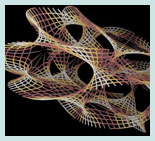 Members of the National Science Foundation and the Department of Energy's High Energy Physics Advisory Panel, meeting in Washington, D.C. on Sept. 24, announced the launch of the Quantum Universe Web site. Along with HEPAP's recently published Quantum Universe report, the new site describes the quest to explain the universe in terms of quantum physics, which governs the behavior of the subatomic world. The site describes a revolution in particle physics and a quantum leap in our understanding of the mystery and beauty of the universe. Members of the National Science Foundation and the Department of Energy's High Energy Physics Advisory Panel, meeting in Washington, D.C. on Sept. 24, announced the launch of the Quantum Universe Web site. Along with HEPAP's recently published Quantum Universe report, the new site describes the quest to explain the universe in terms of quantum physics, which governs the behavior of the subatomic world. The site describes a revolution in particle physics and a quantum leap in our understanding of the mystery and beauty of the universe.
Image: Jean-Francois Colonna
Visit the Quantum Universe Web Site. ... Posted
9/24/04
|
 |
NSF, AAAS Announce Winners of 2004 Visualization Contest
|
 |
| |
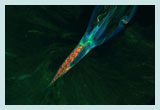 Judges have named 11 winners in the 2004 International Science & Engineering Visualization Challenge, an annual international competition created to recognize outstanding achievement in use of graphics media to illustrate research processes and results. The contest is jointly sponsored by the National Science Foundation and the journal Science, published by the American Association for the Advancement of Science. Winning entries in this year's competition span research fields from viral medicine to Earth science and span the globe from Germany to Seattle. They are published in the Sept. 24 issue of Science and in the journal's electronic edition "Science Online." Judges have named 11 winners in the 2004 International Science & Engineering Visualization Challenge, an annual international competition created to recognize outstanding achievement in use of graphics media to illustrate research processes and results. The contest is jointly sponsored by the National Science Foundation and the journal Science, published by the American Association for the Advancement of Science. Winning entries in this year's competition span research fields from viral medicine to Earth science and span the globe from Germany to Seattle. They are published in the Sept. 24 issue of Science and in the journal's electronic edition "Science Online."
Image: Marna E. Ericson, University of Minnesota
Read the full story.
View the 2004 results. ... Posted
9/23/04
|
 |
President Bush Announces His Intention to Nominate Arden L. Bement, Jr., for NSF Director
|
 |
| |
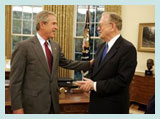 President George W. Bush announced on Sept. 15, 2004, his intention to nominate Arden L. Bement, Jr., to be the director of the National Science Foundation for the remainder of a six-year term ending August 2, 2010. Currently, Dr. Bement serves as Acting Director of NSF, a position he has held since Feb. 22, 2004, and as director of the National Institute of Standards and Technology. He has been NIST's director since Dec. 7, 2001. Previously, he served as the David A. Ross Distinguished Professor of Nuclear Engineering and head of the School of Nuclear Engineering at Purdue University. He earned his bachelor's degree from the Colorado School of Mines, his master's degree from the University of Idaho, and his Ph.D. from the University of Michigan. President George W. Bush announced on Sept. 15, 2004, his intention to nominate Arden L. Bement, Jr., to be the director of the National Science Foundation for the remainder of a six-year term ending August 2, 2010. Currently, Dr. Bement serves as Acting Director of NSF, a position he has held since Feb. 22, 2004, and as director of the National Institute of Standards and Technology. He has been NIST's director since Dec. 7, 2001. Previously, he served as the David A. Ross Distinguished Professor of Nuclear Engineering and head of the School of Nuclear Engineering at Purdue University. He earned his bachelor's degree from the Colorado School of Mines, his master's degree from the University of Idaho, and his Ph.D. from the University of Michigan.
Image: Paul Morse, White House
Read the White House announcement
Dr. Bement's Biography. ... Posted
9/20/04
|
 |
Scientists Shed Light on Mechanism Behind Beneficial Effects of Red Wine
|
 |
| |
 Scientists are a step closer to understanding the health benefits of drinking red wine. Researchers funded by the National Science Foundation (NSF) and affiliated with the Salk Institute in San Diego, Calif., have succeeded in converting chalcone synthase, a biosynthetic protein enzyme found in all higher plants, into an efficient resveratrol synthase. Resveratrol, a beneficial component of red wine, is thought to contribute to the improved cardiovascular effects associated with moderate consumption of red wine. The research results appear in the September issue of the journal Chemistry & Biology. Scientists are a step closer to understanding the health benefits of drinking red wine. Researchers funded by the National Science Foundation (NSF) and affiliated with the Salk Institute in San Diego, Calif., have succeeded in converting chalcone synthase, a biosynthetic protein enzyme found in all higher plants, into an efficient resveratrol synthase. Resveratrol, a beneficial component of red wine, is thought to contribute to the improved cardiovascular effects associated with moderate consumption of red wine. The research results appear in the September issue of the journal Chemistry & Biology.
Image: Joseph Noel, Salk Institute
Read the full story. ... Posted
9/17/04
|
 |
Proving That Shape-Shifting Robots Can Get a Move On
|
 |
| |
 It started with tennis balls. As a former collegiate tennis player, Daniela Rus habitually rolls two tennis balls around in her hand as she paces her office. As a robotics researcher at Dartmouth College, she wondered why the tennis balls shouldn't be able to roll themselves around. She soon determined that electromagnets didn't have enough lifting power to solve the tennis-ball problem. However, her question led to a decade-long research program into the challenges of designing robots that reconfigure themselves to perform different tasks. It started with tennis balls. As a former collegiate tennis player, Daniela Rus habitually rolls two tennis balls around in her hand as she paces her office. As a robotics researcher at Dartmouth College, she wondered why the tennis balls shouldn't be able to roll themselves around. She soon determined that electromagnets didn't have enough lifting power to solve the tennis-ball problem. However, her question led to a decade-long research program into the challenges of designing robots that reconfigure themselves to perform different tasks.
Image: Robert Fitch, Dartmouth College
Read the full story. ... Posted
9/16/04
|
|
|
|

